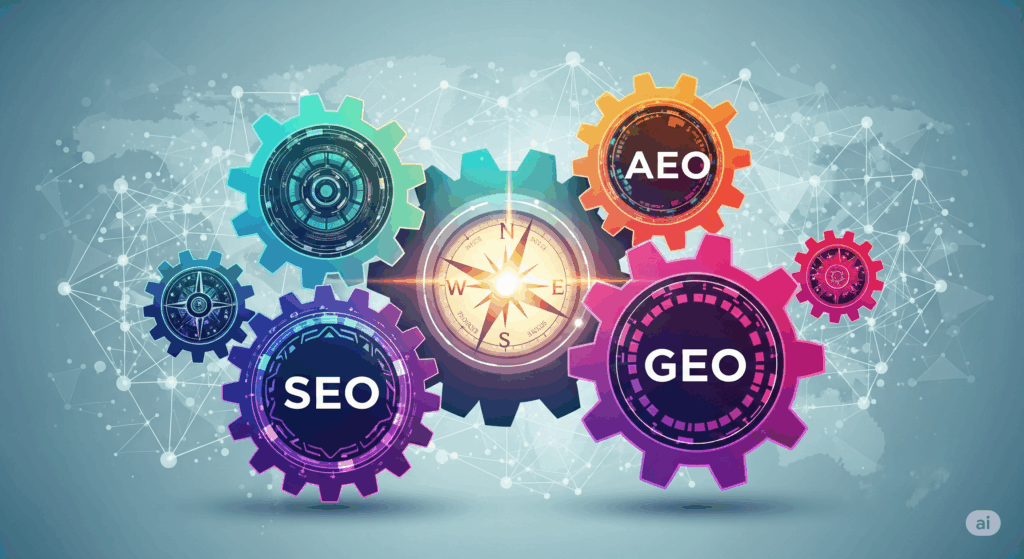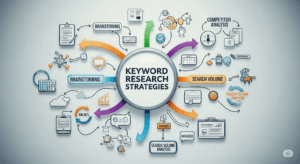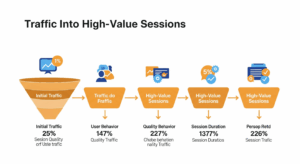Ever felt like the world of digital marketing is constantly throwing new acronyms at you? It’s like a secret club where everyone speaks in code! From SEO to AI SEO, and now terms like AEO, GEO, and others popping up, it can get downright confusing. If you’re scratching your head wondering what all these letters mean for your online presence, you’re definitely not alone.
But don’t worry! I’m here to demystify these terms, explain what they really mean, and show you how they fit into the ever-evolving landscape of online visibility. Think of it as your personal decoder ring for the future of search.
SEO, AEO, GEO, and the Rise of AI in Search
The digital world never stands still, and nowhere is that more apparent than in search engine optimization. What started as a relatively straightforward practice of optimizing for keywords has blossomed into a complex ecosystem where Artificial Intelligence (AI) plays an increasingly dominant role. This evolution has brought with it a whole new set of acronyms. Let’s break them down, one by one, and understand their significance.
The Foundation: SEO – Search Engine Optimization
Let’s start with the granddaddy of them all: SEO.
- SEO (Search Engine Optimization): This is the fundamental practice of improving your website’s visibility in unpaid (“organic”) search engine results. The goal of SEO is to make your website more appealing to search engines like Google, so they rank your pages higher for relevant queries. It involves a blend of:
- On-page SEO: Optimizing content, keywords, titles, meta descriptions, and images on your actual web pages.
- Off-page SEO: Building authority through backlinks from other reputable websites.
- Technical SEO: Ensuring your website’s technical foundation (site speed, mobile-friendliness, crawlability, indexability) is sound for search engines.
SEO isn’t going anywhere. It’s the bedrock. Every other acronym we discuss builds upon or branches off from SEO‘s core principles. It’s about making your content discoverable and relevant to human users and search algorithms.
Adapting to New Search Paradigms: AEO, GEO, and AI SEO
As search evolves, particularly with the rise of voice search and generative AI, new optimization approaches emerge.
1. AEO – Answer Engine Optimization (or something similar!)
You might hear “AEO” in different contexts, but in the world of search, it’s most commonly interpreted as Answer Engine Optimization.
- AEO (Answer Engine Optimization): This refers to optimizing content specifically for answer engines or features that provide direct answers to user queries. Think of Google’s Featured Snippets, Knowledge Panels, or the summary responses you get from voice assistants like Google Assistant, Alexa, or Siri.
- How it works: Instead of just a list of links, answer engines aim to give you the most concise, accurate answer right at the top. AEO focuses on structuring your content to provide clear, direct answers to common questions (often in Q&A format), using concise language that’s easy for AI to extract and present. It’s about getting into that “Position Zero” or being the direct voice response.
- Why it matters: With the rise of voice search and quick answer boxes, getting into these direct answer slots can significantly boost visibility, even if users don’t click through to your site.
2. GEO – Generative Engine Optimization
This is one of the newer terms gaining traction, specifically designed for the impact of Generative AI in search.
- GEO (Generative Engine Optimization): This is the practice of optimizing content for AI-driven search engines and generative models like Google’s AI Overviews (formerly SGE), ChatGPT, or Perplexity AI. These systems don’t just find information; they generate comprehensive, summarized responses, often synthesizing data from multiple sources.
- How it works: GEO goes beyond keywords to focus on content quality, expertise, authoritativeness, and trustworthiness (E-E-A-T). It emphasizes creating content that provides direct, thorough answers, is conversational in tone, and is structured for AI to easily understand and ingest. It also means making sure your brand is a trusted source that these AI models will choose to cite.
- Why it matters: As more search queries are answered directly by AI models, being cited by the AI becomes crucial. GEO is about making your content “AI-friendly” so it gets included in those generated summaries, even if a user never clicks to your site.
3. AI SEO – Artificial Intelligence in SEO
This term acts as a broad umbrella for the integration of AI across all SEO practices.
- AI SEO (Artificial Intelligence in Search Engine Optimization): This refers to the use of AI technologies to enhance, automate, and streamline various aspects of SEO. It’s not a separate type of SEO, but rather the application of AIwithin existing SEO workflows.
- How it works: AI SEO tools can help with tasks like advanced keyword research (identifying conversational queries, semantic relationships), content generation (drafting outlines, writing copy), competitive analysis, predictive analytics (forecasting ranking changes), and technical audits. It uses AI to analyze vast datasets, identify patterns, and offer insights or perform tasks much faster than humans.
- Why it matters: AI SEO tools empower marketers to be more efficient, make data-driven decisions, and adapt to the rapid changes in search algorithms that are increasingly powered by AI themselves.
The Emerging and Less Common Acronyms: LLMO, AISO, GAIO, AIO, CAIO
Now, let’s address some of the terms that aren’t as widely adopted or might represent very specific niche concepts. It’s important to know that in a rapidly evolving field, new acronyms pop up constantly, and some don’t become mainstream.
- LLMO (Large Language Model Optimization): This term isn’t widely standardized, but a logical interpretation would be Large Language Model Optimization. It would focus specifically on optimizing content to be easily understood, ingested, and utilized by Large Language Models (LLMs) like Google’s Gemini, OpenAI’s GPT, or Anthropic’s Claude. This would heavily overlap with GEO and AI SEO, focusing on clear, structured data, high-quality information, and E-E-A-T signals that LLMs prioritize for generating accurate responses.
- AISO (AI Search Optimization): This term is not a widely established acronym. It seems to be a more generalized or perhaps slightly redundant way to refer to the broader practice of AI SEO or Generative Engine Optimization (GEO). If used, it would likely encompass optimizing for any search scenario where AI plays a significant role in understanding queries or generating results.
- GAIO (Generative AI Optimization): Similar to AISO, this isn’t a universally recognized standard acronym. However, it’s very close in meaning and intent to GEO (Generative Engine Optimization). It would likely refer to the optimization of content and presence for platforms driven by Generative AI, aiming to get featured in the AI-generated responses.
- AIO (AI Overviews Optimization): This is a very specific interpretation, primarily referring to optimizing for Google’s AI Overviews feature (formerly known as Search Generative Experience or SGE). While “AIO” sometimes refers to “All in One” (like an “All in One SEO” plugin), in the context of advanced search, it would be about tailoring content to appear in Google’s directly generated AI summaries at the top of the SERP. This is a crucial component of GEO.
- CAIO (Conversational AI Optimization): Another less standardized term, but conceptually, Conversational AI Optimization would focus on preparing content for interaction with conversational AI systems, including chatbots, voice assistants, and AI search interfaces. This would involve optimizing for natural language queries, follow-up questions, and ensuring content can be easily parsed and delivered in a conversational format. It overlaps significantly with AEO and elements of GEO.
It’s important to note: For LLMO, AISO, GAIO, AIO, and CAIO, while their underlying concepts are relevant to modern SEO (especially with the rise of AI), these specific acronyms aren’t as uniformly adopted across the industry as SEO, AEO, and GEO. They often describe specific aspects or applications within the broader AI SEO or GEO landscape.
The Path Forward: Embrace Understanding, Not Just Acronyms
The proliferation of these acronyms isn’t meant to confuse you; it reflects the rapid innovation in the search landscape driven by AI. The key takeaway isn’t to memorize every single letter combination, but to understand the underlying shifts they represent:
- From Keywords to Intent: It’s less about matching exact keywords and more about understanding the user’s intent behind their query.
- From Links to Trust: While backlinks are still important, E-E-A-T (Experience, Expertise, Authoritativeness, Trustworthiness) and being a genuinely helpful, authoritative source are paramount for AI to cite you.
- From Pages to Answers: Search is increasingly about providing direct answers and synthesized information, not just lists of links.
- AI as a Partner: AI isn’t just changing search engines; it’s also empowering marketers to do their jobs more efficiently and effectively.
So, don’t get lost in the alphabet soup. Focus on creating high-quality, trustworthy content that genuinely answers your audience’s questions, and you’ll be well-positioned for success, no matter how many new acronyms emerge in the exciting world of search!







